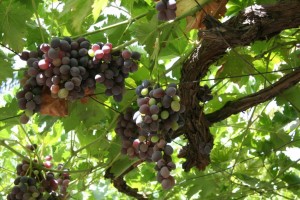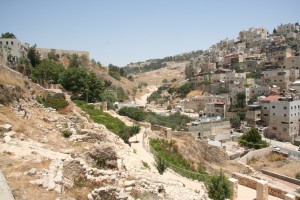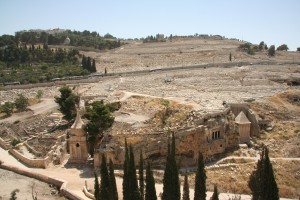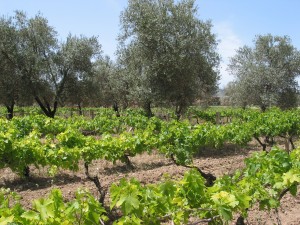By Eric D. Huntsman
One of the beautiful contributions of John to our understanding of the events and teachings of Jesus’ last night are passages that include Jesus’ last discourses and his beautiful Intercessory Prayer (John 13:31–17:26). Delivered in the Upper Room where the Last Supper was held and then along the way to the Mount of Olives, chapters 14 and 16 focus on the imminent departure of the Savior. However, they also frame—and hence emphasize—chapter 15 with its beautiful image of the disciples abiding in Jesus as branches in a vine.
In other words, while he may be going away physically, he will nonetheless be present among believers in a real way. Just as branches derive their life and strength from the main vine, so we draw our spiritual life from Christ, without whom we would die spiritually. Abiding in him we live and receive strength—or grace—to bring forth “much fruit” and enjoy his love (John 15:1–10).
Other important themes in Jesus’ farewell discourses include love and obedience as a product of that love. Resuming the idea of the “new commandment” from the Last Supper (John 13:34), Jesus taught, “This is my commandment, that ye love one another, as I have loved you. Greater love hath no man than this, that a man lay down his life for his friends. Ye are my friends, if ye do whatsoever I command you” (John 15:12–14).
Also central to these discourses is the promise that Jesus would send “the Comforter,” which is an early English rendering of the Greek term pareklētos, which literally means “one called to another’s side as a help or aid.” In most instances this term is taken to refer to the Holy Ghost, who not only comforts us but also serves as a teacher (John 14:25–26); as witness (John 15:26–27); as a prosecutor who convicts or convinces (KJV “reproves”) the world of sin, righteousness, and judgment (John 16:8–11); and as a revealer or guide that also brings all things to our remembrance (John 16:12–15). Jesus had been all these things to the disciples, but he would now send the Holy Ghost to perform these duties in his absence. Still, “Comforter” can refer to Jesus as well, who is “another Comforter” to those that keep his commandments and love him, who will have both the Father and Son manifest themselves to them (John 14:16, 21, 23; cf. D&C 130:3 and Teachings of the Prophet Joseph Smith, 149). This is a vital and comforting truth of the Easter message, as much to us now as it was to the first disciples on the eve of Jesus’ death.
In his final discourses, Jesus also spoke to them of the hatred that the world would have for them, even as it had had for him (15:18–16:4). This hatred was about to lead to his death, which he knew would cause his friends terrible pain. But in a beautiful image taken from a woman’s experience in childbirth, Jesus taught them:
Verily, verily, I say unto you, That ye shall weep and lament, but the world shall rejoice: and ye shall be sorrowful, but your sorrow shall be turned into joy. A woman when she is in travail hath sorrow, because her hour is come: but as soon as she is delivered of the child, she remembereth no more the anguish, for joy that a man is born into the world. And ye now therefore have sorrow: but I will see you again, and your heart shall rejoice, and your joy no man taketh from you. (John 16:20–22)
Explicitly, this passage refers to the grief of the disciples, which would be turned to great joy Easter morning. But it can apply implicitly or symbolically to Jesus himself, who was about to undergo the most terrible pain and grief possible. Yet his suffering would result in great joy for him and his Father as he succeeded in bringing about the immortality and potential of eternal life for all men and women. So while he is not always present with us, we are promised that he will not leave us “comfortless,” which in Greek literally means “orphans,” or children deprived of parents who can provide them the basic necessities of life (John 14:18). Rather, he will come to us as our covenant father, bringing us the gift of eternal life.
This objective, to bring us back to Father to enjoy the kind of life that he and Christ enjoy, is the focus of John 17. Known as the Intercessory Prayer, it portrays Jesus in his great high priestly role, interceding for his people and about to offer his own blood (see Hebrews 8:1–6; 9:11–17). Jesus begins with a prayer for himself (John 17:1–8), which focuses on his mission to give eternal life to those the Father has given him. He then prays specifically for his disciples (John 17:9–19), emphasizing the unity and oneness that he has come to establish between them and God.
Finally, he concludes with a final prayer for unity and love for all people (John 17:20–26), that they might be made “perfect in one” and that the love that God has in Christ may be in them also. While John does not use the word “atonement” itself, his record that Jesus prayed that all would be thus “at-one” with God effectively sets the stage for all that follows: having prayed that we may be one with God, Jesus resolutely moved forward to do all that was necessary to bring that oneness about.





